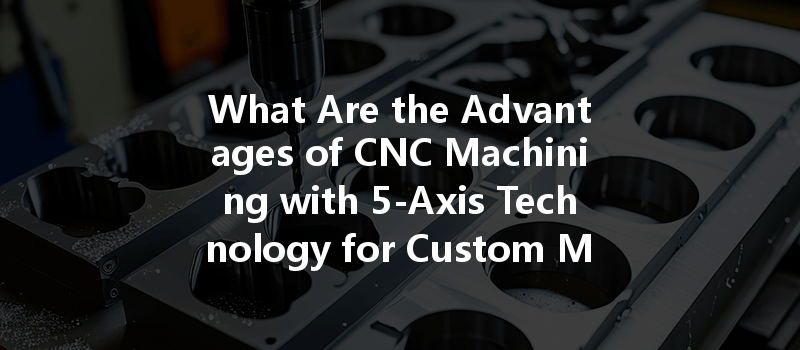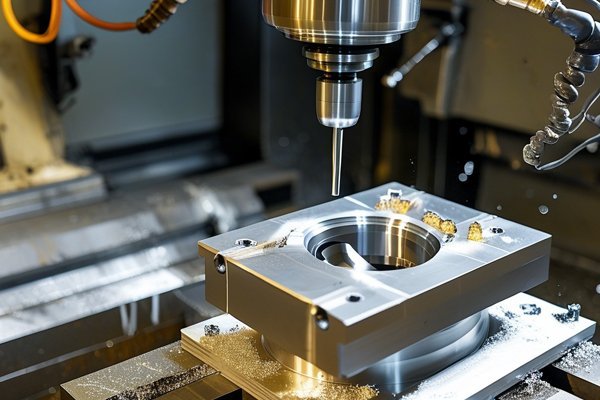When it comes to precision manufacturing, ask any engineer or machinist about the capabilities of CNC machining, and you’re likely to hear about 5-axis technology. Interestingly, a study by MarketsandMarkets predicts that the CNC machining market will reach $100 billion by 2026, with the demand for 5-axis CNC machines growing significantly. But what drives this demand, particularly for custom metal designs? In this extensive blog, we’ll explore the advantages of CNC machining with 5-axis technology, particularly focusing on its application in custom metal designs while offering detailed solutions to common challenges faced in the industry.
Understanding 5-Axis CNC Machining
What is 5-Axis CNC Machining?
CNC (Computer Numerical Control) machining is a process whereby pre-programmed computer software dictates the movement of machinery and tools. Unlike traditional 3-axis machines, which operate only along the X, Y, and Z axes, 5-axis machines can move along these three axes while also rotating on two additional axes (A and B). This means that a tool can approach the workpiece from virtually any direction, enhancing versatility and accuracy.
Key Benefits of Using 5-Axis CNC Machining
5-axis machines allow for a higher level of accuracy when cutting and shaping metal. The ability to manipulate the part in multiple orientations reduces the error margin and enables intricate designs to be realized with precision.
With the capability to create custom shapes and designs in one setup, the need for multiple setups is eliminated. This translates to significant time savings and reduced chances for error associated with repositioning.
Given the efficiency of 5-axis machining, manufacturers can significantly shorten lead times for custom orders. This becomes especially critical in industries such as aerospace, where timing and precision are paramount.
One of the standout features of 5-axis machining is its ability to produce complex geometries that traditional machining methods struggle with. Intricate designs, such as those required in aerodynamic components, can be manufactured more easily, making this technology ideal for custom metal parts.
The increased flexibility allows for better tool access and more effective cutting parameters, leading to improved surface finishes that are essential in many applications.
Applications of 5-Axis CNC Machining in Custom Metal Designs
Aerospace Industry
In the aerospace industry, precision and weight are critical. 5-axis CNC machining enables the production of lightweight structures with complex geometries, allowing engineers to design parts that minimize drag and improve fuel efficiency. For example, turbine blades require precision engineering to optimize performance, and 5-axis machines can produce these parts more accurately and in less time.
Automotive Sector
The automotive industry has seen a resurgent focus on custom parts to meet design specifications. 5-axis machining allows for the creation of performance parts, such as customized engine components and suspension systems. Manufacturers can respond rapidly to market demands and experiment with new designs without extensive downtime.
Medical Devices
The medical device industry focuses heavily on precision and reliability. Custom medical components often require intricate designs that must fit within strict tolerances. 5-axis machining can produce devices such as implants and surgical instruments with the necessary accuracy while reducing lead times to facilitate quicker product launches.
Common Challenges Encountered in 5-Axis CNC Machining
While the advantages of 5-axis CNC machining are compelling, it does come with its own set of challenges that must be addressed for successful implementation. Below, we delve into some common challenges along with solutions.

Challenge: The investment in 5-axis technology can be substantial compared to traditional CNC machines.
Solution: Evaluate long-term savings and productivity gains. Consider leasing options or partnerships that can mitigate upfront costs while still allowing access to advanced technologies.
Challenge: Programming a 5-axis machine requires specialized skills that not all machinists possess.
Solution: Invest in training programs for staff or hire experienced machinists who have a solid understanding of 5-axis programming. Utilizing advanced CAD/CAM software can also streamline this process and simplify programming.
Challenge: The complexity of operations may lead to increased tool wear and maintenance issues.
Solution: Implement a robust maintenance and monitoring program that includes regular tool inspections, usage tracking, and timely replacements. Use high-quality tools designed for extended life in demanding environments.
Challenge: Not all materials are suitable for 5-axis machining processes; some may pose difficulties in achieving optimal results.
Solution: Assess the compatibility of materials with the 5-axis machining process. Choose materials that align with the machine’s capabilities, and consult with material suppliers for the best options.
Best Practices for Implementing 5-Axis CNC Machining
To harness the maximum potential of 5-axis CNC machining for custom metal designs, companies should follow these best practices:
Equip your team with ongoing training to ensure they are up-to-date with the latest machining technologies and software improvements. This includes regular workshops and certifications to enhance skill levels.
Utilize advanced CAD/CAM software that integrates well with your 5-axis machines. Features such as simulation capabilities can help anticipate potential machining challenges and provide solutions before production starts.
Select the right tools for specific projects based on the material and machining requirements. Properly set up the machine before initiating production to ensure optimal performance.
Integrate automation options such as pallet changers or robotic arms to enhance productivity and reduce setup times, allowing for uninterrupted machining processes.
Understanding the advantages of CNC machining with 5-axis technology opens up a world of possibilities for custom metal designs. From improved precision and flexibility to shorter lead times, this technology is becoming increasingly vital across various industries, including aerospace, automotive, and medical devices.
Reflecting on the challenges and solutions outlined, it’s evident that with the right investment in technology, training, and practices, manufacturers can effectively implement 5-axis CNC machining into their operations. By navigating this pathway, businesses not only enhance their technological capabilities but also position themselves for growth in an ever-evolving market.
As we conclude, it’s crucial to acknowledge that adopting advanced manufacturing technologies, like 5-axis CNC machining, is not just a trend but a strategic move vital for staying competitive. The significance of this technology is profound, and companies that embrace it wisely can reap tremendous rewards in quality, efficiency, and design capability. Therefore, investing time and resources in understanding and leveraging these advanced machining solutions is undoubtedly worth your consideration.






